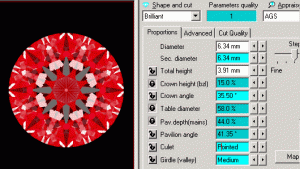I just recently ordered a diamond on-line and I'm very nervous about this purchase. I'll receive the diamond this week. I'm completely new to the whole diamond buying process, so I'd like some opinion/comments on the quality of the diamond I bought - I'm very paranoid about getting screwed somehow! Here is the info:
Carat: .90
Shape: Round
Color: H
Clarity: VS1
Depth: 61.3%
Table:58%
Girdle: Thin to Medium (is this okay?)
Culet: None
Polish: VG
Symmetry: VG
Flourescence: None
Measurements: 6.18-6.22 x 3.8
Cut: Ideal
Grading: GIA
Price: $4083
Comments? Opinions? Please help, I really appreciate it! Does this sound like a fair price? Even if it comes with the GIA documents, should I go ahead and spend the money to get this appraised?
Thank You!!
Carat: .90
Shape: Round
Color: H
Clarity: VS1
Depth: 61.3%
Table:58%
Girdle: Thin to Medium (is this okay?)
Culet: None
Polish: VG
Symmetry: VG
Flourescence: None
Measurements: 6.18-6.22 x 3.8
Cut: Ideal
Grading: GIA
Price: $4083
Comments? Opinions? Please help, I really appreciate it! Does this sound like a fair price? Even if it comes with the GIA documents, should I go ahead and spend the money to get this appraised?
Thank You!!










300x240.png)